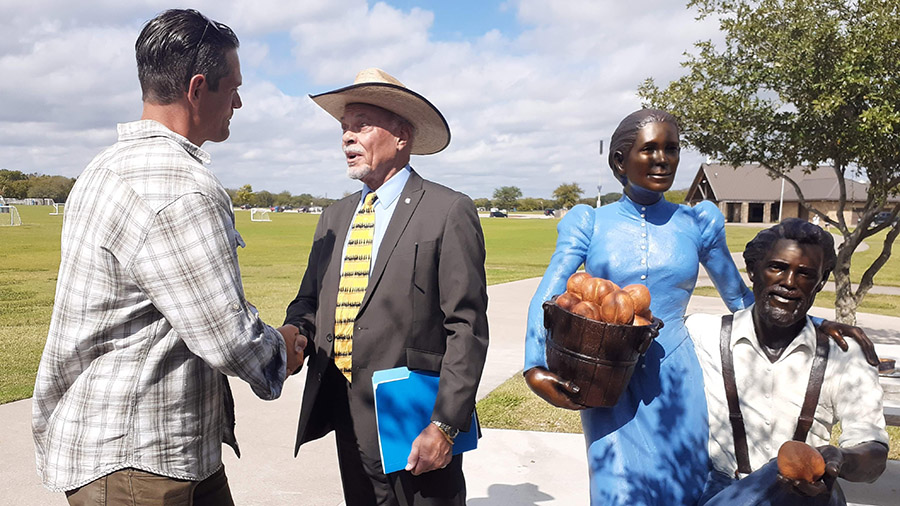
Southlake’s memorial to Bob and Almeady Jones
Check out this San Antonio exhibit honoring Black cowboys – featuring Southlake’s Bob Jones
By Scott Nishimura
Photo courtesy of Southlake Historical Society
Bob Jones, the Southlake pioneer who was born into slavery and later prospered as a rancher here, is part of “Black Cowboys: an American Story,” exhibit that runs through Feb. 9, 2025, at the Witte Museum in San Antonio.
Bob Jones, born in 1850 and whose mother was a slave, joined cattle drives from Texas to railheads in Kansas after the Civil War. He used the money he made to buy land and cattle, and Jones and his wife, Almeady, established a ranch at the Tarrant and Denton county line in what’s now Southlake.
“Black cowboys were integral to the growth of Texas’ cattle industry immediately after the Civil War,” Ron Davis II, Witte Museum curator of American history, said in a release.
“In fact, one in four cowboys who went up the trails was a Black cowboy,” said Davis, who co-curated the exhibition with Bruce Shackelford, the Witte’s Texas history curator.
The exhibit opened at the Witte in November 2021 and has since traveled nationally to other museums, including the African American Museum of Dallas, Chisholm Trail Heritage Museum in Cuero, National Cowboy & Western Heritage Museum in Oklahoma City, and the Fort Worth Museum of Science and History. It inspired musician Leon Bridges’ Met Gala attire.
With the exhibit’s return to San Antonio, the Witte added new information about the Jones Ranch and two others, and a feature on Matthew “Bones” Hooks, a founder of the Black community in Amarillo. A new film explores the history and evolution of Black rodeos.
After it closes at the Witte, “Black Cowboys” will travel to other museums, including the Autry Museum of the American West in California and Kalamazoo Valley Museum in Michigan.
“The Witte is excited to welcome back this exhibition, showcasing the powerful stories of Black cowboys,” Dirk Elmendorf, the Witte’s chief executive and president, said in the Witte release.
“This is the culmination of an amazing collaboration between our community of cowboys, ranchers and scholars to give a more complete perspective on the history of Texas,” he said. “This exhibition gives you a view from the saddle of the importance of Black cowboys in the American West.”
The exhibition “shares accounts of Black cowboys who exercised courage in the face of discrimination, skill to overcome great odds and success through generations of ranching and becoming leaders in their field,” the Witte said.
Bob Jones, who died in 1936, was the son of a white man, Leazer Alvis Jones, and his slave Elizabeth, who was born in 1822 and died in 1877, according to the Southlake Historical Society.
During the Civil War, Bob Jones herded sheep for his father, according to the society. After the war, Bob Jones and his brother, Jim, bought land from their father. Bob Jones then began buying land farther east in Denton County to start a cattle and farming operation, according to the society.
“He later told his children that he was drawn to the area because it was on Denton Creek [water for his stock] and had lots of trees” to provide shade for cattle and for firewood, the society says in a biography of Jones on its website.
Southlake has remembered Jones in naming Bob Jones Road, Bob Jones Park and Bob Jones Nature Center and Preserve after him. Last year, Jones was inducted into the Texas Trail of Fame and honored with a bronze star placed in a sidewalk in the Fort Worth Stockyards National Historic District.
